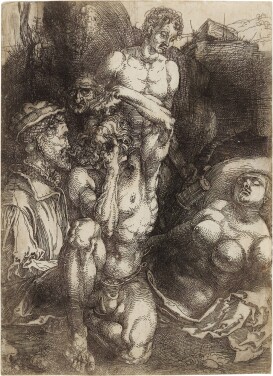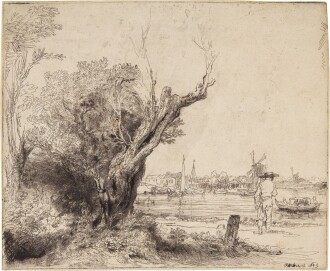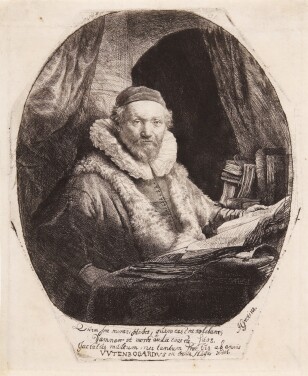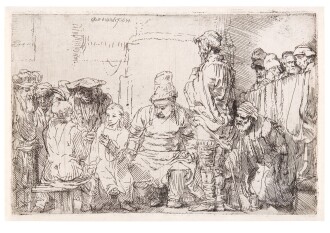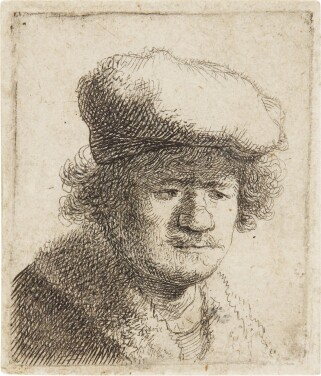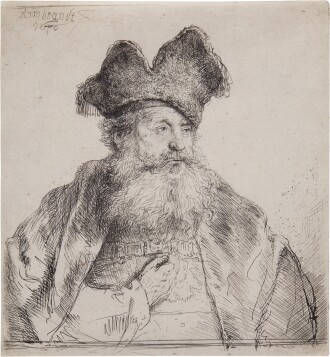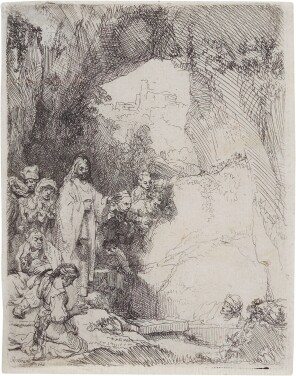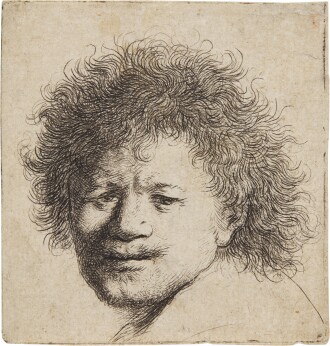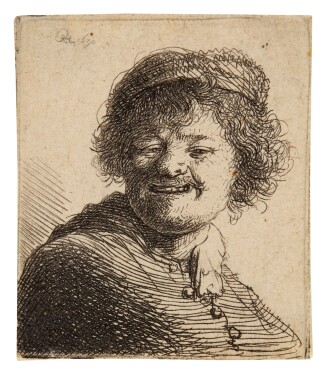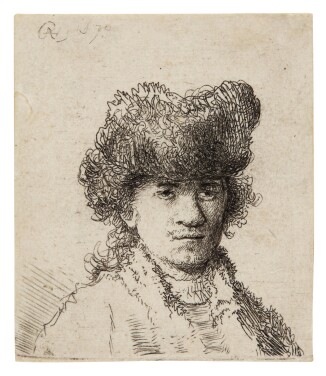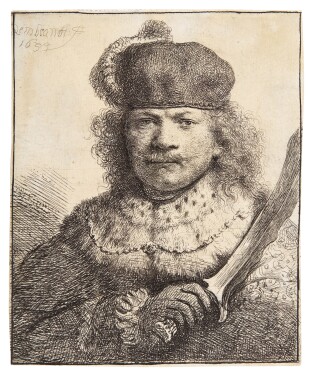C oinciding with Masters Week, Sotheby’s London’s diverse Old Master Prints sale surveys the advent of Western printmaking, led by three remarkable examples of Albrecht Dürer’s finest engravings: Adam and Eve, Coat of Arms with a Skull, and St. Jerome in his Study. These masterful engravings from a single-owner collection are joined by a superb impression of Rembrandt’s atmospheric landscape The Omval and are complemented by two important collections of the Dutch artist’s most sought-after portraits and biblical scenes.
Auction Highlights
Masterpieces by Dürer and Rembrandt
Sotheby’s is delighted to present in this sale four masterworks of Old Master printmaking that together represent some of the most fruitful moments in the history of the field. Dürer's unparalleled mastery of engraving in the early 16th century is illustrated by three of his most desirable intaglio prints: Coat of Arms with a Skull, Adam and Eve and St Jerome in his Study, while Rembrandt's ingenious experimentation with etching and drypoint in the mid seventeenth century is represented by the rare landscape, The Omval.

(right) Albrecht Dürer, St Jerome in His Study (B. 60; M., Holl. 59), Engraving, 1514. Estimate £120,000–180,000.
Moreover, the impressions included in this collection are all very fine examples of these momentous subjects. The three prints by Dürer are early Meder a impressions, each exhibiting the richness, depth and luminosity the artist would have envisaged when he engraved the plates. Similarly, The Omval is extremely scarce in this quality, and through its pronounced sulphur tinting and rich burr, the work demonstrates painterly and atmospheric aspects that transcend the usual parameters of the medium.

(right) Albrecht Dürer, Adam and Eve (B., M., Holl. 1), Engraving, 1504. Estimate £150,000–250,00.
The fact that several of these impressions have passed through the hands of some of the most discerning collectors of prints is therefore no surprise. Albert L. Blum, Fürst Karl von Paar and Marcel Mirault have long been considered among the most esteemed connoisseurs in the field. The historical inclusion of these superb impressions in their collections is thus fitting, while it serves to underline the significance and scarcity of the works.
Rembrandt's Vision - Prints from a Private Swiss Collection
Additionally, this sale includes a wonderful selection of intimate and inventive Rembrandt prints from a private Swiss Collection. The seventeen works on offer provide a close look at the Dutch artist’s experimental approach to printmaking, demonstrating his unrivalled ability to story-tell through the manipulation of various intaglio techniques.
A creative visionary and a shrewd businessman, Rembrandt appealed to all audiences by exploring subjects inspired by daily life, as well as popular Bible passages. Highlights from this collection include a fine, bright impression of the dignified Old Man with a Divided Fur Cap (B., Holl. 265; New Holl. 182; H. 170), whose ornate robes could have been inspired by contemporaneous theatre, alongside familiar scenes, such as Christ Driving the Money Changers from the Temple (B., Holl. 69; New Holl. 139; H. 126), Rembrandt’s interpretation of the drama that unfolds in Matthew 21:12-14.
Property from an Important Private American Collection: Rembrandt’s Self-Portraits
Rembrandt is perhaps best known for his incisive and illuminating portrayals of his own image. In his paintings, drawings and etchings, the artist frequently revisited the genre of self-portraiture, ultimately creating around eighty examples across all media, of which approximately one third are etchings.
This single-owner collection comprises many of Rembrandt’s most scarce and important etched self-portraits. His earliest and most informal forays into the genre are represented by fine impressions of Self-Portrait with Cap Pulled Forward and Self-Portrait in a Cap: Laughing, candid and intimate portraits created on a jewel-like scale when Rembrandt was only 24 years old. The artist conveyed a more distinguished mood in Self-Portrait with Curly Hair and White Collar: Bust and Self-Portrait in a Fur Cap: Bust, and in the highly rare Self-Portrait with Long Bushy Hair: Head Only. In a more sombre rendering executed a few years later, Self-Portrait in a Cap and Scarf with the Face Dark: Bust, Rembrandt experiments with chiaroscuro, and in this early, rich example, the dramatic contrasts of light and shade are displayed to full effect.


